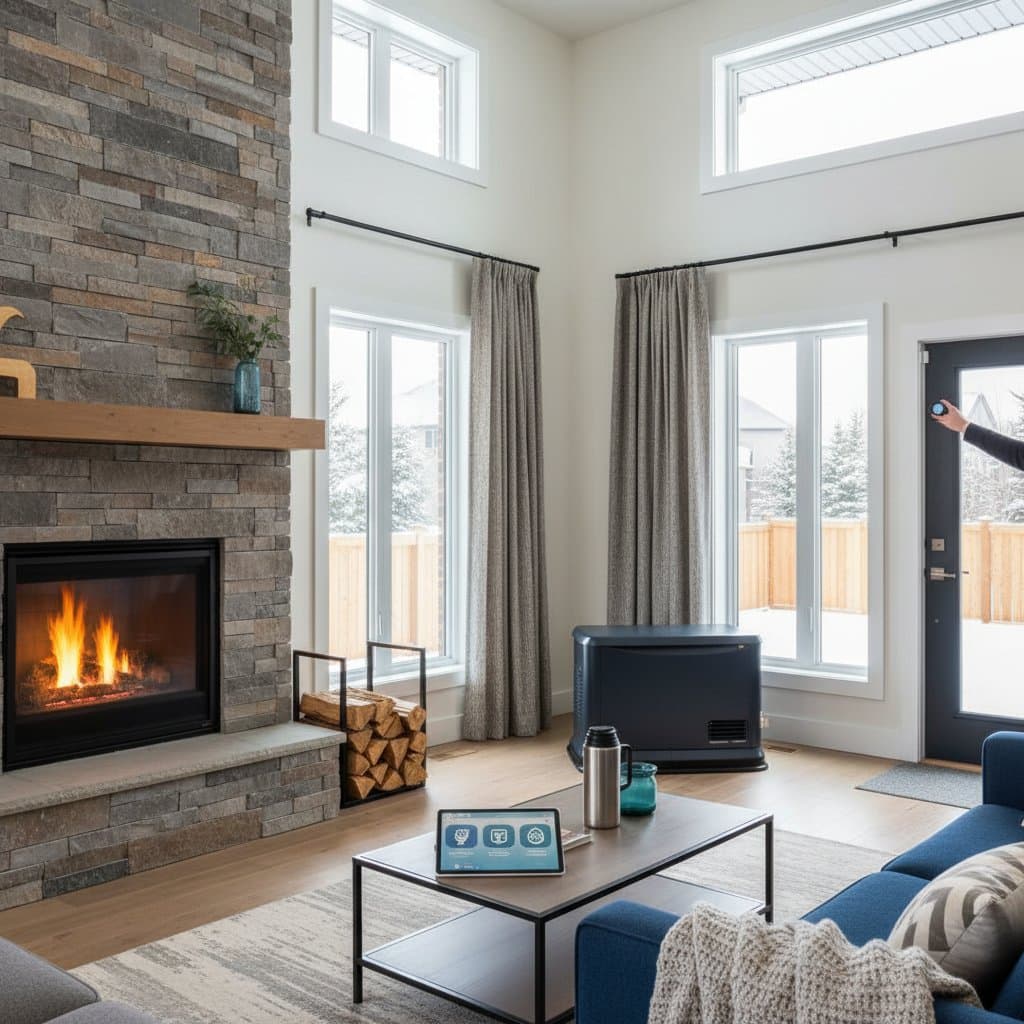Essential Winter Preparation to Protect Your Home from Storms
Winter arrives with subtle signs, such as a crisp breeze that soon turns biting. Frozen rain against windows and howling winds remind homeowners of their shelter's vital role. Proactive preparation ensures safety, extends home durability, and provides reassurance when storms strike.
Key Preparation Steps
- Conduct roof, gutter, and insulation inspections prior to significant temperature declines
- Allocate $300 to $800 for maintenance that averts thousands in potential repair expenses
- Examine heating systems, caulking, and exterior drainage to optimize performance and security
- Assemble an emergency kit including water, illumination sources, and power alternatives
- Schedule seasonal tasks before the initial severe freeze to sidestep urgent, inflated costs
Preparing the Roof and Gutters
The roof serves as the primary barrier against snow and ice accumulation. A maintained roof channels water away effectively, whereas an overlooked one retains ice, resulting in leaks and structural decay. Look for absent or fractured shingles and remove obstructions from gutters and downspouts. Clogged gutters trap melting snow, which refreezes into ice dams that cause extensive harm.
In areas prone to intense snowfall, install heat cables along the roof's edge. These devices, priced at $120 to $250, inhibit ice formation that might dislodge gutters from supporting boards. During the assessment, evaluate attic ventilation as well. Adequate airflow maintains a cool roof deck to limit ice development and expels interior moisture to prevent condensation issues.
Maintaining the Heating System
A furnace breakdown amid a blizzard disrupts daily life severely. Avoid this scenario by arranging a professional evaluation before temperatures plummet. Typical tune-ups range from $90 to $200 and involve burner cleaning, filter replacement, and safety mechanism verification. For heat pumps or pellet stoves, include airflow inspections and grille decontamination.
Fireplace users must sweep chimneys to eliminate creosote, which sparks dangerous fires. Store seasoned firewood in a sheltered, dry area. Install carbon monoxide detectors near bedrooms and test them each month. Winter safety encompasses more than heat; it demands clean air and dependable equipment.
Planning for Emergency Power and Lighting
Storms frequently disrupt electricity supply. A generator sustains critical functions during outages. Portable options cost $500 to $1,200, while whole-home standby models exceed several thousand dollars. Select according to local outage patterns and family requirements. Operate fuel-based generators outside to avoid carbon monoxide accumulation.
Acquire rechargeable flashlights, solar-powered lanterns, and spare batteries. Candles provide light but pose fire risks in prolonged darkness. Maintain a reserve of bottled water, shelf-stable foods, and warm blankets in an easy-to-reach spot. Preparation transforms brief power losses into manageable situations.
Budgeting Effectively for Winter Safeguards
Comprehensive preparation need not exhaust finances. Homeowners typically invest $500 to $1,500 based on property dimensions and existing state. This expenditure yields substantial savings, particularly against average storm-related water damage repairs surpassing $5,000.
Categorize tasks for better management:
- Immediate tasks: Seal cracks, clear gutters, verify detectors
- Moderate enhancements: Boost insulation, service heaters, prune overhanging branches
- Extended upgrades: Add backup generators, replace windows, refine drainage systems
Distribute efforts across weekends to control both effort and spending.
Safety Protocols and Expert Assistance
While do-it-yourself efforts conserve funds, certain activities demand specialist intervention. Delegate electrical modifications, chimney servicing, and high-pitched roof fixes to certified professionals. Confirm that service providers hold valid insurance and comply with regional codes for insulation and ventilation.
Equip yourself with safety attire for gutter cleaning or attic access. Employ sturdy ladders and enlist a companion for support when feasible. Preparation prioritizes foresight over hazard; invest in gloves, protective eyewear, and respirators for handling insulation or tools.
Sustaining Maintenance During Winter
As storms intensify, shift focus to ongoing monitoring. Watch for snow buildup near foundations and ensure drainage paths remain clear. Dislodge icicles promptly to prevent gutter strain. Maintain steady indoor temperatures to safeguard pipes in less-used spaces from freezing.
Benefits of Thorough Home Preparation
Preparation culminates in tranquility. Amid fierce winds and pelting sleet, retreat comfortably knowing inspections, seals, and reinforcements have fortified your sanctuary against the season's challenges.
